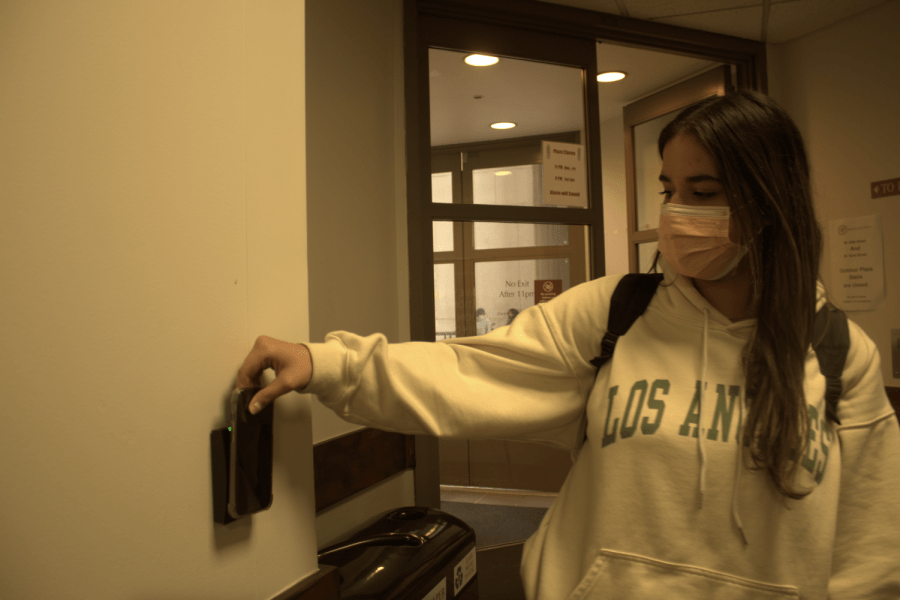To Opt-In or Out: Fordham’s Frustration With Electronic IDs
Students opting to use virtual IDs experience complications and switch to physical IDs
Students are struggling to use newly implemented Electronic IDs, leaving some to return to using a physical ID card.
October 1, 2021
Once enrolled with the university, Fordham students are given the choice to opt-in for either a physical or electronic identification card (ID). The many students who opted for an electronic ID are reporting difficulty gaining access to various buildings.
According to Bob Howe, assistant vice president for communications, the electronic ID pilot began in the spring of 2021 in response to the “COVID requirements issued by the state, city, and CDC to provide any students who were going to be on campus with a way to get a University ID.” As well as a way for Fordham to process faculty and student IDs without making students travel to a physical location. Howe said that 4,787 students at Fordham University are currently in possession of an electronic ID.
One of these students, Nyssa Schulz-Rodriguez, Fordham College at Lincoln Center (FCLC) ’25, decided to opt-out of her electronic ID and replace it with a physical one after experiencing difficulties with the Fordham ID App.
Schulz-Rodriguez said that she now uses her physical ID and believes it is much simpler.
“It’s a whole process of having to go through Fordham’s app and then go through Duo Push, which is like another app (for multifactor authentication), just to scan it,” Schulz-Rodriguez said. The electronic ID “wouldn’t go nearly as fast, and I just started to notice people who had physical IDs were just like, one, one and done, and it was pretty easy.”
Schulz-Rodriguez said that she now uses her physical ID and believes it is much simpler.
Howe acknowledged that many students have opted to use a physical ID after experiencing difficulty with electronic IDs. But, has assured students that the inefficiency with the electronic ID was only present for the first few days and has been quickly solved.
Similarly, Deming Yaun, university dining contract liaison, said most of the issues with electronic IDs in regard to meal plans were the result of students failing to correctly finish the sign-up process for an ID.
“I was on some calls at the university, and it indicated that when a person signs up for electronic ID, it looks like they’re finished — but there’s one last step: They have to hit confirm or submit,” Yaun said. “People were not doing that or didn’t realize that they had to do it.”
Yaun said that this issue never interfered with students’ abilities to enter their dormitories or acquire a meal from the university’s dining services.
“Nothing affects anybody’s ability to get the meal in the first few days. There’s a lot of meal plan confusion and sometimes people’s information just hasn’t been entered correctly, but we always in the first several days accommodate people through the confusion and make sure that they have meals,” Yaun said. “Especially on weekends when offices might be closed and they don’t have an opportunity to take care of whatever confusion there might be.”
Fordham IT continues to improve the electronic ID based on feedback from users, according to Howe. He encouraged students to speak to IT Customer Care ([email protected]) if any issues arise with their electronic IDs.
Despite all the assurances and developments, many Fordham students are opting in for the physical ID choice instead.

















